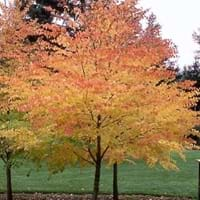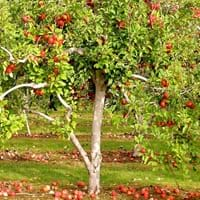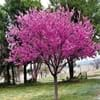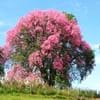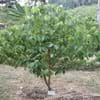Life Span
Perennial
Perennial
Type
Tree
Flowering Plants, Fruits, Trees
Origin
Eastern Asia, China, Japan
Central Asia
Types
Heronswood Globe , Kreukenberg Dwarf
Aceymac apple, Bailey Sweet apple, Dabinett apple, Nehou apple
Habitat
shaded moist road banks, Wet Woods
Hillside
USDA Hardiness Zone
4-8
5-8
Sunset Zone
2b, 3a, 3b, 4, 5, 6, 14, 15, 16, 18, 19, 20
A1, A2, A3, 8, 9, 10, 11, 12, 13, 14, 15, 16, 17, 18, 19, 20, 21, 22, 23, 24
Habit
Oval or Rounded
Oval or Rounded
Flower Color
Red, Green
White
Flower Color Modifier
Bicolor
Not Available
Fruit Color
Green, Copper, Sandy Brown
Green, Red
Leaf Color in Spring
Purple, Light Green, Bronze
Dark Green
Leaf Color in Summer
Green
Green
Leaf Color in Fall
Yellow, Gold, Orange Red
Brown, Green, Light Yellow
Leaf Color in Winter
Not Available
Not Available
Leaf Shape
Heart-shaped
Oblong
Plant Season
Spring, Summer, Fall, Winter
Spring
Sunlight
Full Sun, Partial Sun
Full Sun, Partial shade
Growth Rate
Medium
Medium
Type of Soil
Clay, Loam
Loamy
The pH of Soil
Acidic, Neutral
Neutral
Soil Drainage
Well drained
Well drained
Bloom Time
Early Spring
Fall, Summer
Tolerances
Not Available
Drought
Where to Plant?
Ground
Ground
How to Plant?
Seedlings, Transplanting
Grafting, Seedlings, Transplanting
Plant Maintenance
Medium
Medium
Watering Requirements
Keep ground moist, Use Mulches to help prevent water loss during hot and windy weather
Medium
In Summer
Lots of watering
Lots of watering
In Spring
Moderate
Moderate
In Winter
Average Water
Average Water
Soil pH
Acidic, Neutral
Neutral
Soil Type
Clay, Loam
Loamy
Soil Drainage Capacity
Well drained
Well drained
Sun Exposure
Full Sun, Partial Sun
Full Sun, Partial shade
Pruning
Prune if you want to improve plant shape, Remove dead branches
Prune when plant is dormant, Remove dead or diseased plant parts
Fertilizers
All-Purpose Liquid Fertilizer, Apply 10-10-10 amount
All-Purpose Liquid Fertilizer
Pests and Diseases
Bacterial leaf spot, Leafminers, Red blotch
Aphids, Canker, Caterpillars, Powdery mildew, Root rot
Plant Tolerance
Salt and Soil Compaction, Shade areas, waterlogging
Drought
Flowers
Insignificant
Yes
Flower Petal Number
Not Available
Single
Foliage Texture
Medium
Medium
Foliage Sheen
Matte
Matte
Attracts
Birds, Butterflies
Birds
Allergy
sneezing, Sore eyes
Mouth itching, Throat itching
Aesthetic Uses
Beautification, Cottage Garden
Not Available
Beauty Benefits
Making cosmetics, Skin Problems
Not Available
Environmental Uses
Shadow Tree, soil stabilisation
Air purification
Medicinal Uses
Not Available
Cancer, constipation, Diabetes, Diarrhea, Dysentry, Fever, Heart problems, Tooth ache
Part of Plant Used
Whole plant
Fruits
Other Uses
Showy Purposes, Used as Ornamental plant, Used in pulpwood and lumber production
Used As Food, Wood is used for making furniture
Used As Indoor Plant
No
No
Used As Outdoor Plant
Yes
Yes
Garden Design
Feature Plant, Shade Trees, Street Trees
Fruit / Fruit Tree, Shade Trees, Showy Tree
Botanical Name
CERCIDIPHYLLUM japonicum
Malus domestica
Common Name
Katsura Tree
Apple Tree
In Hindi
Cercidiphyllum
सेब का वृक्ष
In German
Kuchenbäume
Apfelbaum
In French
Cercidiphyllum
Pommier
In Spanish
Cercidiphyllum
Manzano
In Greek
Cercidiphyllum
μηλιά
In Portuguese
Cercidiphyllum
Macieira
In Polish
Grujecznik
jabłoń
In Latin
Cercidiphyllum
Arbore
Phylum
Magnoliophyta
Magnoliophyta
Class
Magnoliopsida
Magnoliopsida
Order
Hamamelidales
Rosales
Family
Cercidiphyllaceae
Rosaceae
Genus
Cercidiphyllum
Malus
Clade
Angiosperms, Eudicots
Angiosperms, Eudicots, Rosids
Tribe
Not Available
Not Available
Subfamily
Not Available
Not Available
Number of Species
Not Available
Season and Care of Katsura Tree and Apple Tree
Season and care of Katsura Tree and Apple Tree is important to know. While considering everything about Katsura Tree and Apple Tree Care, growing season is an essential factor. Katsura Tree season is Spring, Summer, Fall and Winter and Apple Tree season is Spring, Summer, Fall and Winter. The type of soil for Katsura Tree is Clay, Loam and for Apple Tree is Loamy while the PH of soil for Katsura Tree is Acidic, Neutral and for Apple Tree is Neutral.
Katsura Tree and Apple Tree Physical Information
Katsura Tree and Apple Tree physical information is very important for comparison. Katsura Tree height is 1,220.00 cm and width 1,220.00 cm whereas Apple Tree height is 25.00 cm and width 20.00 cm. The color specification of Katsura Tree and Apple Tree are as follows:
Katsura Tree flower color: Red and Green
Katsura Tree leaf color: Purple, Light Green and Bronze
Apple Tree flower color: White
- Apple Tree leaf color: Dark Green
Care of Katsura Tree and Apple Tree
Care of Katsura Tree and Apple Tree include pruning, fertilizers, watering etc. Katsura Tree pruning is done Prune if you want to improve plant shape and Remove dead branches and Apple Tree pruning is done Prune when plant is dormant and Remove dead or diseased plant parts. In summer Katsura Tree needs Lots of watering and in winter, it needs Average Water. Whereas, in summer Apple Tree needs Lots of watering and in winter, it needs Average Water.
